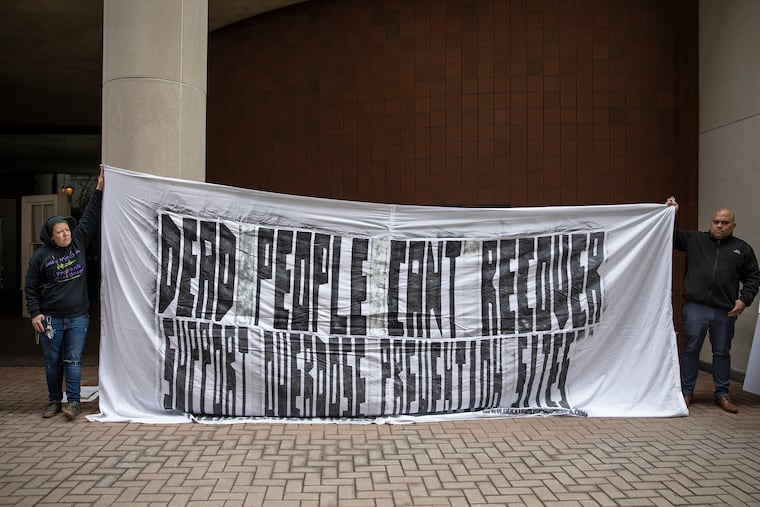Department of Justice’s shameful attempt to block a proven life-saving program | Opinion
If the goal of the federal government is to reduce the deaths and diseases that result from illicit drug abuse, it should get out of the way of those who can make that come to pass.

On Feb. 6, prosecutors from the Office of the U.S. Attorney in Eastern Pennsylvania joined with prosecutors from the U.S. Department of Justice in Washington in an attempt to block a group of privately funded citizens from establishing the first-in-the-nation safe injection facility in Philadelphia. Last year, Philadelphia city officials gave the OK for the Safehouse nonprofit to establish the site. Recently Pittsburgh’s mayor expressed an interest in allowing the same in his city. In the last year, leaders of Seattle, Denver, and New York City have also shown an interest. Yet it is the position of the Department of Justice, expressed by Deputy Attorney General Rod Rosenstein last summer, that it violates federal law to permit and “facilitate” the use of federally banned substances, and the Feb. 6 lawsuit seeks a preemptive opinion from a federal judge. This obstruction of a method of harm reduction that has been shown for decades to save lives and reduce the spread of disease is shameful and medieval.
Harm reduction strategies begin with the realistic, nonjudgmental premise that there has never been and will never be a drug-free society. Akin to my profession’s credo — “First, do no harm” — harm reduction seeks to mitigate the harms caused by black-market drugs, fueled by drug prohibition. Instead, it aims at reducing the spread of disease and death from drug use.
“Safe syringe programs,” endorsed by the Centers for Disease Control and Prevention as well as the American Medical Association, reduce the spread of HIV, hepatitis C, and other infectious diseases. One form, needle-exchange, has existed in the U.S since 1988, and has reduced the spread of HIV by up to 58 percent. Unfortunately, once they exchange their needles, no one is around to rescue a user in the event of an overdose. And users eventually can sell or share the replacement needles and syringes.
Supervised injection facilities, also called “safe consumption sites” or “safe injection sites” go a step further. They ensure needles don’t subsequently get shared or sold because they are used under supervision and returned after use. More importantly, staff are close by with the overdose antidote naloxone at the ready if needed, and nudge users into rehab programs. The Lancet reported a 35 percent drop in overdoses resulting from the safe injection site in Vancouver, British Columbia. About 120 safe consumption sites exist throughout Europe, Canada, and Australia. Canada’s first facility, called “Insite,” opened in the Downtown Eastside district of Vancouver in 2003.
The Canadian Medical Association Journal reported on Vancouver’s experience with safe injection sites: “Twelve weeks after Insite opened in September 2003 … the average daily number of drug users injecting in public dropped by nearly half while the average daily number of publicly discarded syringes and injection-related litter also fell significantly.”
And a report on the Swiss program begun in 1996 concluded, “Injecting rooms have enabled the adoption of less hazardous injecting practices, reduced the number of overdose deaths, minimized the nuisance to the community of injecting in public places and probably reduced HIV transmission … Some [intravenous drug users] have entered treatment as a result of attending injecting rooms.”
Critics view safe consumption sites as flouting the law, express discomfort with what they see as government sanctioning of intravenous drug use and other illegal activities and argue that these sites do little to deter illegal drug use. While these concerns are understandable, extensive evidence put forth in my recent policy analysis shows these sites save lives by reducing overdose deaths, by reducing the spread of deadly diseases, and by reducing the threat of violence against drug users.
Many of our inner cities are plague-ridden with people suffering from IV drug addiction. More and more of them are responding to the overwhelming evidence that safe consumption sites save lives. If the goal of the federal government is to reduce the deaths and diseases that result from illicit drug abuse, it should get out of the way of those who can make that come to pass.
Jeffrey A. Singer, M.D., practices general surgery and is a senior fellow at the Cato Institute.